


SAMUEL FINLEY BREESE MORSE 1791 -
xxxxxThe American Samuel Morse, an artist by profession, began work on an electromagnetic signalling system in 1832. With the help of others and a study of earlier electric telegraphs, he produced his own model around 1835 and then, two years later, in 1837, he completed a code by which messages could be sent. This “Morse Code” was made up of a system of dots and dashes, achieved by varying the duration of the electric signal, and by using different combinations to spell out letters and numbers. In 1843 he persuaded Congress to set up a telegraph line from Washington to Baltimore, and this proved so successful that within a decade a network had been installed across the United States, and the system was in use in Europe. This signalling system made a major contribution to world-
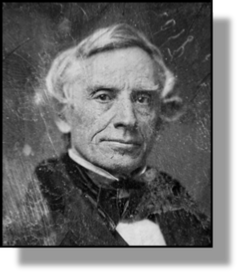 xxxxxThe American Samuel Morse was born in Charlestown, Massachusetts, the son of a Calvinist minister. After studying at Yale College, he worked for a Boston book publisher, but, being quite proficient at the painting of miniature portraits, he soon left to take up art. He studied in London during the years of the Anglo-
xxxxxThe American Samuel Morse was born in Charlestown, Massachusetts, the son of a Calvinist minister. After studying at Yale College, he worked for a Boston book publisher, but, being quite proficient at the painting of miniature portraits, he soon left to take up art. He studied in London during the years of the Anglo-
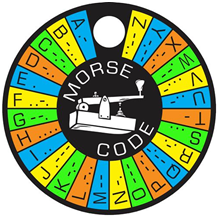 xxxxxIt was in that year, while travelling home from Europe after another period of art study, that he overheard a conversation about the electromagnet, then recently discovered. Intrigued by its concept and possibilities, on his return he set about making an electromagnetic signalling system. With the help of a partner (a colleague at New York University), and by studying descriptions of an earlier prototype of 1831 -
xxxxxIt was in that year, while travelling home from Europe after another period of art study, that he overheard a conversation about the electromagnet, then recently discovered. Intrigued by its concept and possibilities, on his return he set about making an electromagnetic signalling system. With the help of a partner (a colleague at New York University), and by studying descriptions of an earlier prototype of 1831 -
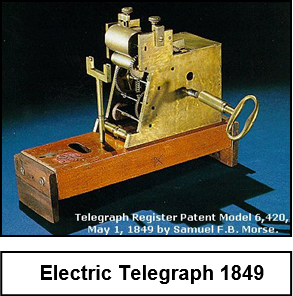 xxxxxAfter failing to sell his invention in Europe, in 1843, taking a Congressman as a partner, he persuaded Congress to set up an experimental telegraph line from Washington to Baltimore. It was completed the following year and proved so successful that within a decade a number of companies had installed a network of relays across the United States, and the system had been widely adopted in Europe. However, success also brought a series of court battles over claims by his partners, and by inventors who vowed to have produced earlier versions of the electric telegraph. Nonetheless, by 1854 he had acquired the legal rights to his system and was living a comfortable life, with a home in New York City and a villa overlooking the Hudson River
xxxxxAfter failing to sell his invention in Europe, in 1843, taking a Congressman as a partner, he persuaded Congress to set up an experimental telegraph line from Washington to Baltimore. It was completed the following year and proved so successful that within a decade a number of companies had installed a network of relays across the United States, and the system had been widely adopted in Europe. However, success also brought a series of court battles over claims by his partners, and by inventors who vowed to have produced earlier versions of the electric telegraph. Nonetheless, by 1854 he had acquired the legal rights to his system and was living a comfortable life, with a home in New York City and a villa overlooking the Hudson River
xxxxxMorse, an ardent republican, was a sociable man and, during his career, acquired a number of close friends, including the French general and statesman the Marquis de Lafayette and the American novelist James Fenimore Cooper. In his later years he gave generously to various Church charities and temperance societies, and he was a benefactor of his alma mater, Yale College. Ironically enough, his reputation as an artist, which he struggled so hard to create in his early years, has grown considerably in the United States, whilst the invention which bears his name and was such an important contribution to world-
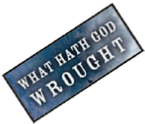
xxxxxIncidentally, when the first telegraph line was completed in 1844 -
xxxxx…… The house in Cleveland Street where young Morse took lodging during his time in London -

xxxxx…… A spin-
xxxxx…… The first transatlantic telegraph cable was laid in 1858, but it only worked for four weeks! However, as we shall see, in 1866 (Vb) Brunel’s Great Eastern steamship laid a successful cable at the second attempt. By that time Britain had been connected to the continent and Europe to Africa for a number of years. ……
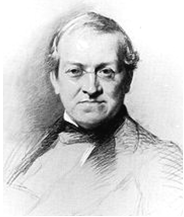 xxxxxInxthe same year, 1837, the first practicable electric telegraph was also invented in England, the work of the physicist Charles Wheatstone (illustrated) and William Forthergill Cooke (1802-
xxxxxInxthe same year, 1837, the first practicable electric telegraph was also invented in England, the work of the physicist Charles Wheatstone (illustrated) and William Forthergill Cooke (1802-
xxxxxWheatstone (1802-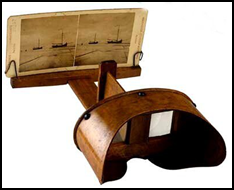 engineer William Cooke and, in 1837, -
engineer William Cooke and, in 1837, -
xxxxxIncidentally, in 1845 the telegraph system brought a man to justice and the gallows. On New Year’s Day a certain John Tawell went to Slough and murdered his mistress. He was seen making his getaway, but managed to catch a train back to London. A message was sent ahead of him, however, and the police were waitin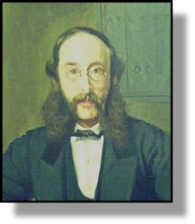 g for him when he arrived! ……
g for him when he arrived! ……
xxxxx…… Inx1849 the German entrepreneur Paul Reuter (1816-
Acknowledgements
Morse: photograph – Image online, U.S. National Archives, Washington, artist unknown. Telegraph: National Museum of American History, Washington. Wheatstone: drawing by the English artist Samuel Lawrence (1817-
W4-
Including:
Charles Wheatstone



